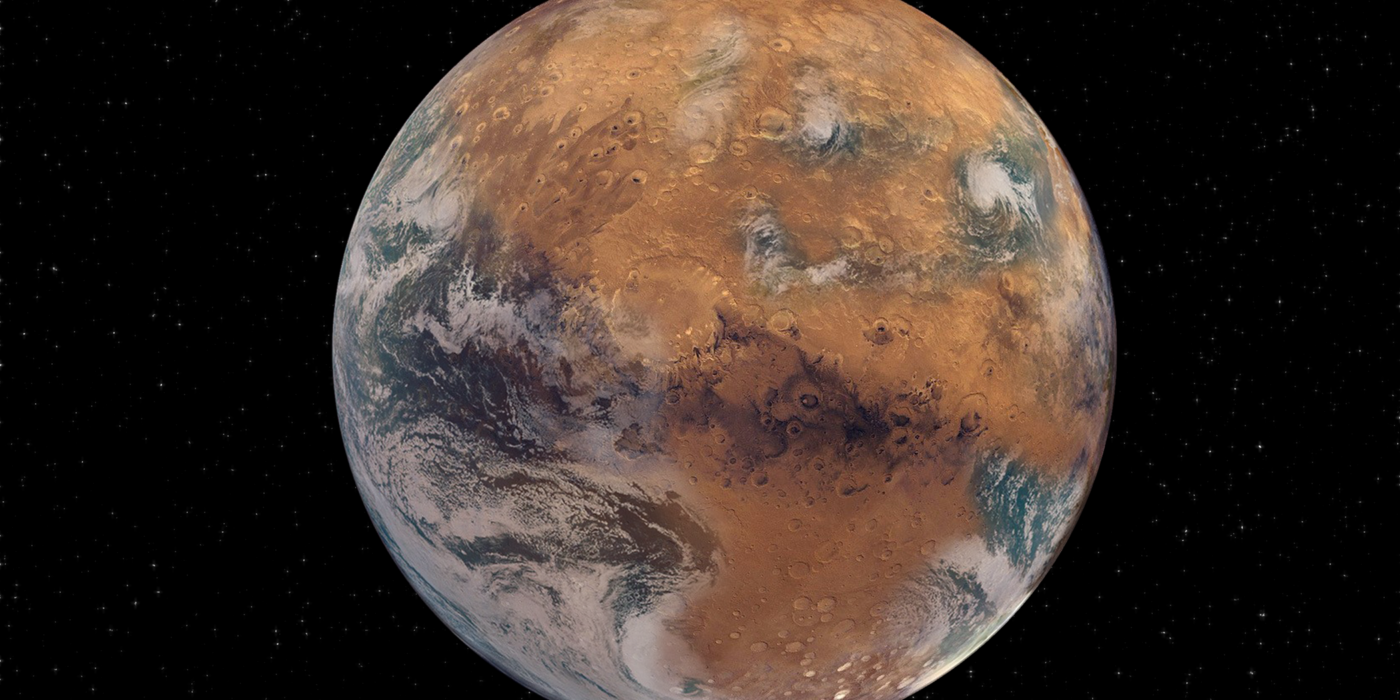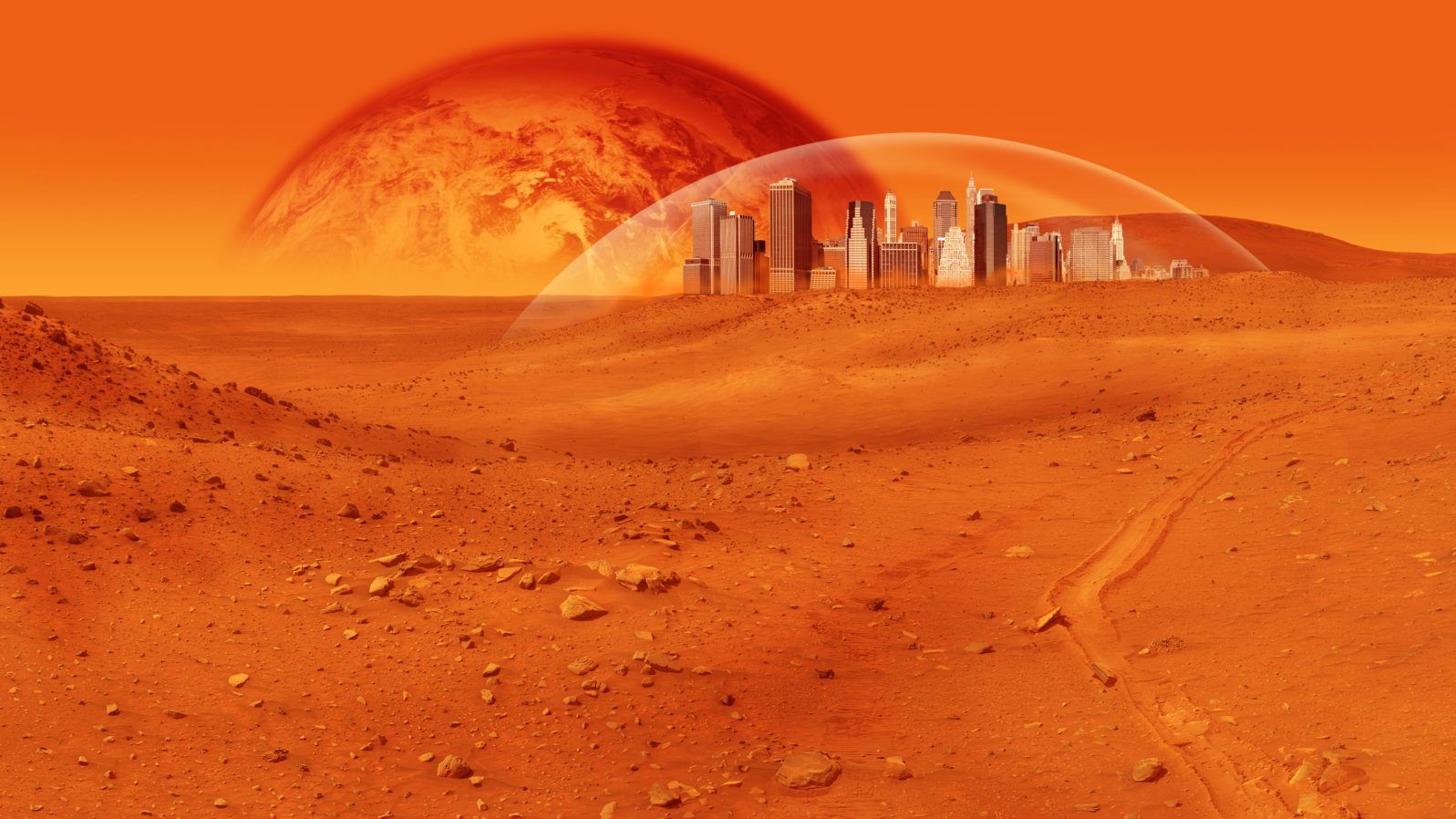Theoretical Physicist: Colonizing Mars Is a Ridiculous Idea
Making Mars habitable (terraforming) has been kicking around engineering circles for decades. What are the chances, given Moore’s Law-level increases in technology?And so what does a theoretical physicist know about it, you ask? Well, when it’s Sabine Hossenfelder, she is always
worth listening to:
The biggest problem is not that Mars is “minus 60 degrees Celsius or minus 80 Fahrenheit,” she explains, but that it has no magnetic field so the atmosphere was blown away by the solar winds. So to form Mars into a second Earth, we would first need to give it a magnetic field. How easy is that?:
In a paper that was just published in April in the International Journal of Astrobiology, two physicists explain that all you have to do put a superconducting wire around Mars, simple enough, isn’t it? The circle would have to have a radius of about 3400 kilometers but the diameter of the collected wires only needs to be about five centimeters. Well, okay, you need an insulation and a refrigeration system to keep it superconducting. And you need a power station to generate a current. But other than that, no fancy technology required.
That superconducting wire would have a weight of about one million tons which is only about 100 times the total weight of the Eiffel tower. The researchers propose to make it of bismuth strontium calcium copper oxide (BSCCO). Where do you get so much bismuth from? Asteroid Mining. Piece of cake.
Sabine Hossenfelder, “Terraforming Mars in 3 Simple Steps” at BackRe(Action) (October 16, 2021)

The projects for warming Mars up and producing an atmosphere both sound equally likely…
In other news from Mars exploration, we are told that while Mars once had water, it may be just too small to hold appreciable amounts of it naturally:
Researchers proposed many possible explanations, including a weakening of Mars’ magnetic field that could have resulted in the loss of a thick atmosphere.
But a study published the week of Sept. 20 in the Proceedings of the National Academy of Sciences suggests a more fundamental reason why today’s Mars looks so drastically different from the “blue marble” of Earth.“
Mars’ fate was decided from the beginning,” said Kun Wang, assistant professor of earth and planetary sciences in Arts & Sciences and senior author of the study. “There is likely a threshold on the size requirements of rocky planets to retain enough water to enable habitability and plate tectonics, with mass exceeding that of Mars.”
Talia Ogliore, Newsroom, “Mars habitability limited by its small size, isotope study suggests” at Washington University in St. Louis (September 20, 2021)
On a further note, we were told recently by Rice University evolutionary biologist Scott Solomon that colonizing Mars might speed up human evolution:
“Science fiction has often portrayed martians or aliens coming from Mars as being tall and lanky and thin,” Solomon says. But the effect could actually be the opposite. The problem is that these body types might pose certain hazards during childbirth — weakened skeletons could fracture people’s pelvises while giving birth. So, natural selection may actually favor shorter people with denser bones.
Also, Mars’ high radiation levels could directly affect characteristics like skin color or eyesight over generations of evolution. This has already happened on Earth — melanin is more resistant to ultraviolet rays, for example.
“Perhaps in the face of this high radiation, we might evolve some new type of skin pigment to help us deal with that radiation,” Solomon says, adding that we could potentially evolve cancer-resistant genes. “Maybe we get our own green men.”
Joshua Rapp Learn, “Colonizing Mars could speed up human evolution” at Astronomy (October 8, 2021)
Learn cautions that this is just speculation. In any event, humans would need to evolve to be very different on Earth from what we are now to even want to live on Mars, given the conditions Hossenfelder describes.
Whatever one may choose to make of the fact, Earth is indeed a Privileged Planet.
Note: Here’s the Astrobiology April 2021 issue on Mars.
You may also wish to read: Theoretical physicist shows why the sim universe is pseudoscience It’s a lot of fun in science fiction and some scitech celebs buy in. But Sabine Hossenfelder would find plenty to disagree with Avi Loeb about. One problem is, computers can’t simulate human thought because it is often non-computational, which means it is something computers can’t do, by definition.
and
Theoretical physicist Sabine Hossenfelder asks, was the universe made for us? She says no. But the question is more complicated than it appears at first. It is true that we have only one universe to go by but then each of us is a unique individual too. What if you had an experience no one else has had? Does that make it untrue?
